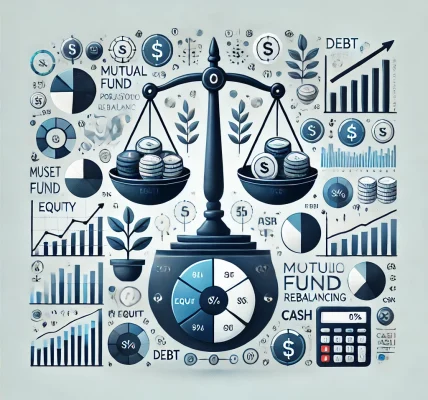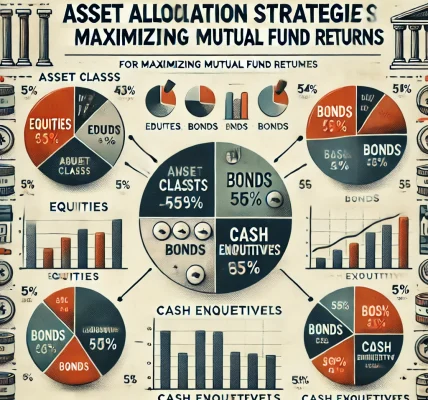Introduction
Retirement planning is an essential step in ensuring financial stability and peace of mind in your golden years. One of the most effective ways to build wealth for retirement is by investing in mutual funds. With various options available, choosing the right mutual funds can be challenging.
This guide will help you understand how mutual funds work for retirement planning, the best types of funds to invest in, and expert tips to maximize returns while minimizing risks.
Why Choose Mutual Funds for Retirement Planning?
Mutual funds are an excellent investment option for retirement planning because they offer:
✅ Diversification: Spread your investments across different assets, reducing risk. ✅ Professional Management: Expert fund managers handle investments on your behalf. ✅ Flexibility: Choose from a variety of funds based on your risk tolerance and retirement goals. ✅ Liquidity: Easily redeem your investments when needed. ✅ Tax Benefits: Some mutual funds offer tax advantages that can enhance savings.
Types of Mutual Funds for Retirement Planning
When planning for retirement, you must select mutual funds based on your age, risk appetite, and investment horizon. Here are the best types of funds to consider:
1. Equity Mutual Funds
Equity funds invest primarily in stocks, making them ideal for long-term growth. If you are in your 20s or 30s and have a high risk tolerance, equity mutual funds can help build significant wealth.
Best Options:
- Large-Cap Equity Funds: Suitable for stable long-term growth.
- Mid-Cap and Small-Cap Funds: Higher risk but can generate better returns over time.
- Index Funds: Low-cost funds that track stock market indices.
Risk Level: High Recommended for: Young investors with a long retirement horizon.
2. Debt Mutual Funds
Debt mutual funds invest in fixed-income securities like bonds and government securities. They are more stable and less risky than equity funds, making them ideal for conservative investors or those nearing retirement.
Best Options:
- Corporate Bond Funds: Offer steady returns with moderate risk.
- Government Bond Funds: Secure investments with low risk.
- Dynamic Bond Funds: Adjust investment strategies based on market conditions.
Risk Level: Low to Moderate Recommended for: Investors nearing retirement looking for stable income.
3. Hybrid Mutual Funds (Balanced Funds)
Hybrid funds combine equity and debt investments, offering a balance between growth and stability. They are suitable for investors who want a mix of risk and security.
Best Options:
- Aggressive Hybrid Funds: Higher allocation to equities for growth.
- Conservative Hybrid Funds: More allocation to debt for stability.
Risk Level: Moderate Recommended for: Investors in their 40s or early 50s who want a balanced portfolio.
4. Target Date Mutual Funds
These funds automatically adjust their asset allocation as you approach retirement. They start with a higher equity allocation and gradually shift towards debt instruments over time.
Risk Level: Varies based on the investor’s age Recommended for: Investors looking for hassle-free retirement planning.
Top Mutual Funds for Retirement Planning in [Current Year]
1. Best Large-Cap Equity Funds
- Fund A (Example) – 10-Year Average Return: 12%
- Fund B (Example) – 10-Year Average Return: 11.5%
2. Best Debt Mutual Funds
- Fund C (Example) – 5-Year Average Return: 8%
- Fund D (Example) – 5-Year Average Return: 7.5%
3. Best Hybrid Mutual Funds
- Fund E (Example) – 7-Year Average Return: 9%
- Fund F (Example) – 7-Year Average Return: 8.5%
(Note: Check with financial advisors or research the latest fund performances before investing.)
Factors to Consider When Choosing Retirement Mutual Funds
✅ Investment Horizon: The longer you invest, the more you can benefit from compounding. ✅ Risk Tolerance: Choose funds based on your ability to handle market fluctuations. ✅ Fund Performance: Analyze past performance and consistency. ✅ Expense Ratio: Lower fees mean higher overall returns. ✅ Tax Implications: Consider tax-saving options like ELSS (Equity-Linked Savings Scheme). ✅ Retirement Goals: Define your retirement needs to determine the right asset allocation.
How to Maximize Returns from Mutual Fund Investments
- Start Early: The sooner you invest, the more time your money has to grow.
- Invest Regularly: Use SIPs (Systematic Investment Plans) to average out market fluctuations.
- Diversify Your Portfolio: Don’t rely on a single type of mutual fund.
- Monitor and Rebalance: Review your portfolio periodically to align with financial goals.
- Stay Invested for the Long Term: Avoid frequent withdrawals to maximize compounding benefits.
Common Mistakes to Avoid in Retirement Investing
❌ Investing Too Conservatively Too Soon: Equities offer higher long-term returns; don’t switch to debt funds too early. ❌ Ignoring Inflation: Choose funds that beat inflation to maintain purchasing power. ❌ Frequent Portfolio Switching: Constant changes can lead to unnecessary fees and tax burdens. ❌ Neglecting Emergency Funds: Always keep a portion of your savings liquid for emergencies.
Conclusion
Investing in mutual funds is one of the best ways to build a strong financial foundation for retirement. Whether you prefer equity funds for higher returns, debt funds for stability, or hybrid funds for a balanced approach, selecting the right mix is crucial.
By starting early, staying invested, and choosing the right funds, you can secure your financial future and enjoy a stress-free retirement.
Final Recommendations
- Young Investors (20s-30s): Focus on equity funds for maximum growth.
- Mid-Career Investors (40s-50s): Consider hybrid funds for balanced risk.
- Near-Retirement Investors (50s-60s): Opt for debt and conservative funds for stability.
Disclaimer: Mutual fund investments are subject to market risks. Past performance is not indicative of future results. Please consult a financial advisor before making investment decisions.




